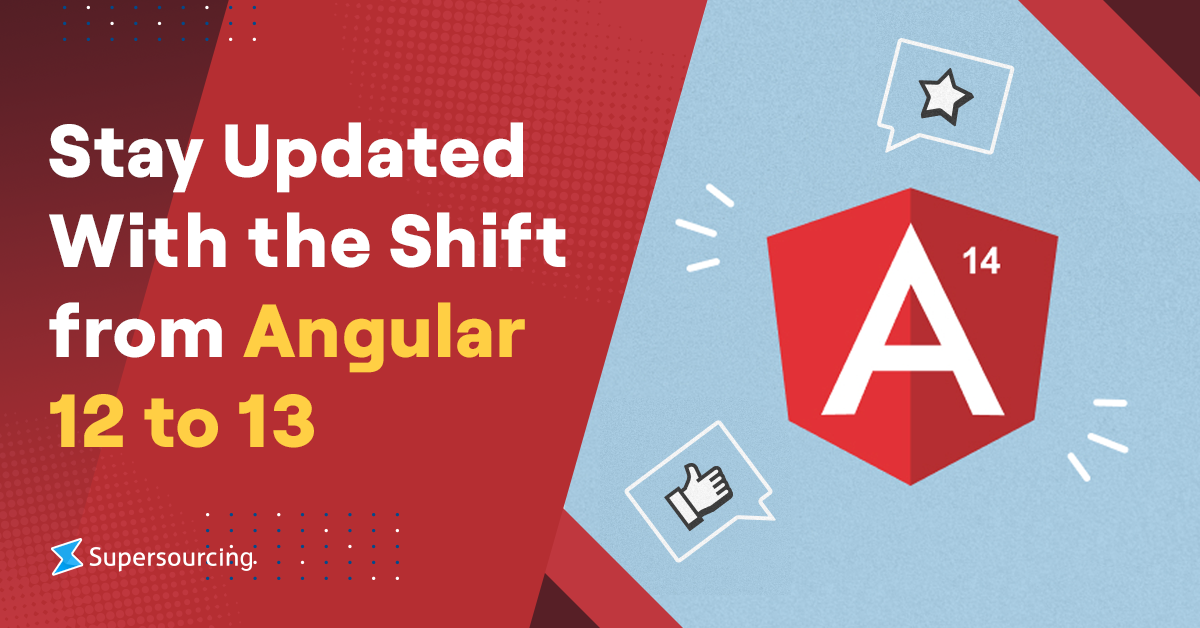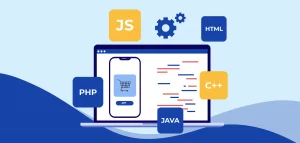Table of content
This piece will delve into the dissimilarities between Angular 12 and Angular 13, as well as explore the novel features that front-end developers can expect from Angular 13. However, before we delve into the technical aspects, let’s first examine the Google Trends data on Angular’s popularity throughout 2021. As developers anticipate the release of Angular 13, it’s important to stay up to date on the latest trends and updates. Upgrading from Angular 12 to 13 can offer significant benefits, such as improved performance and new features. Hence, it’s crucial to plan ahead and prepare for the migration process. Staying informed on the latest Angular developments and best practices, developers can continue to create exceptional applications.
Understanding Angular 13
Angular 13 is the latest release of the popular front-end development framework, which became available on November 03, 2021. It is an updated version of Angular 12 and comes with various features and updates. For developers and programmers, it is essential to understand the differences between Angular 13 and its previous versions before making any development decisions.
One of the significant features of Angular 13 is the update of the Component API. With the updated version, creating components has become much more straightforward, and AngularJS developers can create a component using the streamlined API feature known as ViewContainerRef.create. This change simplifies the task of creating components, making it easier for developers to develop web applications.
Angular 13 is 100% IVY with no View Engine feature, which helps to speed up compilation and boost the platform’s efficiency on all projects. The front-end framework has also eliminated the output formats that include View Engine-specific metadata, leading to a better development experience.
Angular 13 has removed Internet Explorer 11, which indicates the platform’s shift towards modern web development. Now, Angular 13 can use native web APIs and modern browser features such as web animations and CSS variables to offer the best possible user experience.
In the latest version of Angular 13, there are also several framework changes and dependency updates. For example, RxJS7.4 is the default for all new applications, and RxJSv6.x apps will need to update manually. With these updates, developers can create more reliable and efficient web applications.
Finally, Angular 13 comes with improved testing and debugging features. The enhanced testbed allows developers to test the latest module at the end of each test, resulting in a faster DOM after each test has been compiled. This feature provides developers with the ability to test and debug their code efficiently and effectively.
In summary, Angular 13 comes with various features and updates to improve the development experience and make it more straightforward to create web applications. The updated Component API, IVY, Framework Changes & Dependency Updates, improved Testing & Debugging, and other features provide developers with a robust framework to develop web applications that are fast, efficient, and user-friendly.
Understanding Angular 12
Angular 12, which was released in May 2021, offered several new features and improvements that made it an excellent front-end development framework. However, Angular 13, which was released in November 2021, introduced several new features that set it apart from its predecessor. Here is a closer look at the differences between the two versions.
Angular 12 introduced several important features, including support for TypeScript 4.2, an improved aesthetic, and support for Webpack 5. The most significant feature in Angular 12 was the deprecation of the View Engine, which gave developers the option to switch to IVY. In addition, the Angular team and community were tasked with determining the best course of action for Protractor, based on feedback from RFC.
Angular 12 also included several style improvements, including support for inline Sass in the style field of the @Component decorator, and new dev tools for Google Chrome. The built-in profiler in the new dev tools allowed users to preview and record change detection events and see which detection cycle and components took the longest time to complete.
Shifting From Angular 12 to 13
Angular is a popular and robust framework for building web and mobile applications. With the release of Angular 13, developers are eager to take advantage of its new features and enhancements. If you’re currently using Angular 12, you may be wondering how to upgrade to the latest version.
How is Angular 13 Better than Angular 12?
Angular 13, the latest version of the framework, offers an updated level to create components with fewer efforts and to ease up the task of AngularJS developers. It is also 100% IVY with no longer the View Engine feature in there, which helps speed up the compilation and boost the platform’s efficiency on all projects. Angular 13 also features an improved and updated version of Angular Package Format (APF) that has eliminated the output formats that include View Engine-specific metadata.
In addition, Angular 13 has removed Internet Explorer 11, taking a step forward in web development. The Angular framework comes with various updates, including the latest version of RxJS (7.4) as the default option for all new applications. Additionally, it offers improved testing and debugging capabilities. Thanks to an enhanced TestBed that results in the faster compilation of the Document Object Model (DOM) after each test.
In conclusion, while Angular 12 and Angular 13 both offer significant improvements to the Angular framework. The latter brings new features and updates that can enhance developer experience and website functionality.
Angular 13 Features & Updates
Angular 13, the latest version of the popular web application framework, comes with a range of exciting new features and enhancements. It improves development efficiency, performance, and user experience. Let’s explore the key highlights of Angular 13.
Ivy Everywhere
Angular 13 is based entirely on Ivy Everywhere, which was first introduced in Angular 12. Unlike earlier versions, Angular 13 no longer uses View Engine for rendering components. By utilizing the Ivy mechanism, Angular 13 offers enhanced compilation speed and platform efficiency, making it faster and more efficient for developers.
Changes to Angular Package Format (APF)
The Angular Package Format (APF) has been refined to make it more streamlined and efficient for developers. The APF has been modernized with the latest JavaScript standards, such as ES2020, and components such as obsolete output formats and View Engine-specific metadata have been removed. The use of ngcc in libraries has also been eliminated, resulting in faster program execution and leaner package production.
Upgraded Component API
Developers no longer have to use boilerplate code to create components. Angular 13 has introduced View ContainerRef. create Components for the package. This feature allows developers to create components dynamically, streamlining the API of the program and reducing the time and effort required to create components.
Enhanced Testing and Debugging
The testing and debugging mechanism of the Angular framework has been remarkably improved with the release of Angular 13. Developers now have two new methods for testing – TestBed.initTestEnvironment and TestBed.configureTestingModule. It provides the latest modules for testing and compiling code. Using these methods results in faster DOM (Document Object Model) speed and improved efficiency.
No Internet Explorer 11
Angular 13 has completely removed Internet Explorer (IE) from the Angular ecosystem. The framework now uses native web APIs for modern browser features such as web animations and CSS variables. This change results in faster loading times and a better user experience for users of modern browsers.
Improved Component Accessibility (A11y)
Angular 13 prioritizes accessibility (A11y) in all components of the framework. All components, including ARIA, touch targets, checkboxes, radio buttons, and contrasts, have been tested to meet the latest accessibility standards. The goal is to ensure that all users can access the application with ease.
Better Angular CLI and Performance
Angular 13 comes with a persistent build-cache feature by default, resulting in a 68% increase in build speed. Additionally, developers have access to more ergonomic alternatives, amplifying the framework’s capabilities and improving the development experience.
Angular 12 Features & Updates
Angular 12 is a popular framework for developing web applications. It has several key features that make it stand out from other frameworks.
Ivy Compilation
One of the most important features of Angular 12 is its new rendering mechanism ‘Ivy Everywhere.’ This feature aims to replace the existing View Engine with a new rendering mechanism. It helps developers quickly access all components in the Angular ecosystem.
Minimizing Support for IE11
Angular 12 has reduced the use of Internet Explorer 11 (IE11) in its framework. IE11 was previously linked to Angular, but it has been proven to be more of a liability than a solution. Hence, this feature allows developers to eliminate the use of IE11 in their programs.
Switch from i18n
i18n message IDs is a technique in Angular to carry out messaging plans whenever it initiates a new task. However, this technique is unstable due to its improper whitespace processing and functional sorting of organizations and ICU articulations. Hence, Angular 12 implemented a new standard message-id configuration that is highly efficient and doesn’t facilitate whitespace changes. This new messaging method is helps reduce the cost of unnecessary interpretation invalidation and retranslation.
Typescript 4.2
Angular 12 has adopted Typescript 4.2, a programming language that makes programming easier for developers. Typescript 4.2 has made significant changes to the framework. For example a transition in Tuple Types and the use of Abstract Construct Signatures. These changes help enhance the readability and functionality of the program.
Style Improvements
To enhance the styling capabilities of Angular 12, the framework now allows support for inline Sass in the styles field of the @Component decorator. This is a significant improvement that makes it easier for developers to apply custom styling to their components without having to create a separate Sass file. The integration of a new Sass module with Angular CDK and Angular Material has been incorporated into the system. Therefore, your application must switch from node-sass to the sass npm package if it uses any of the above packages to use the new styling features.
Nullish Coalescing
Angular 12 introduces a feature known as Nullish Coalescing, which enables developers to write cleaner code in TypeScript classes. This feature significantly improves the ability to write conditional logic, making it clearer for developers to write complex conditionals with ease.
Webpack 5.37 Support
A valuable addition for Angular 12 is the ability to support Webpack 5.37, which significantly enhances the framework’s capabilities. It puts a substantial influence on bundle size, building execution, etc. This aids in improving long-term caching and form execution with high effectiveness. Hence, this feature eases the programming for developers.
Conclusion
The angular framework is a popular choice for building web applications. Both Angular 12 and Angular 13 are capable options. However, Angular 13 offers a range of new and advanced features that can greatly improve developer efficiency and reduce development time for projects. If you are planning to hire AngularJS developers in India to build your project, choosing Angular 13 can lead to better outcomes.
The AngularJS community ensures that the framework stays up-to-date with the latest trends and requirements of the digital market. Hence, it’s a reliable and long-lasting option for businesses. If you are interested in building your business application in Angular, our team of expert Angular developers can provide you with the actual cost and time to build your app. Contact us today to begin.







